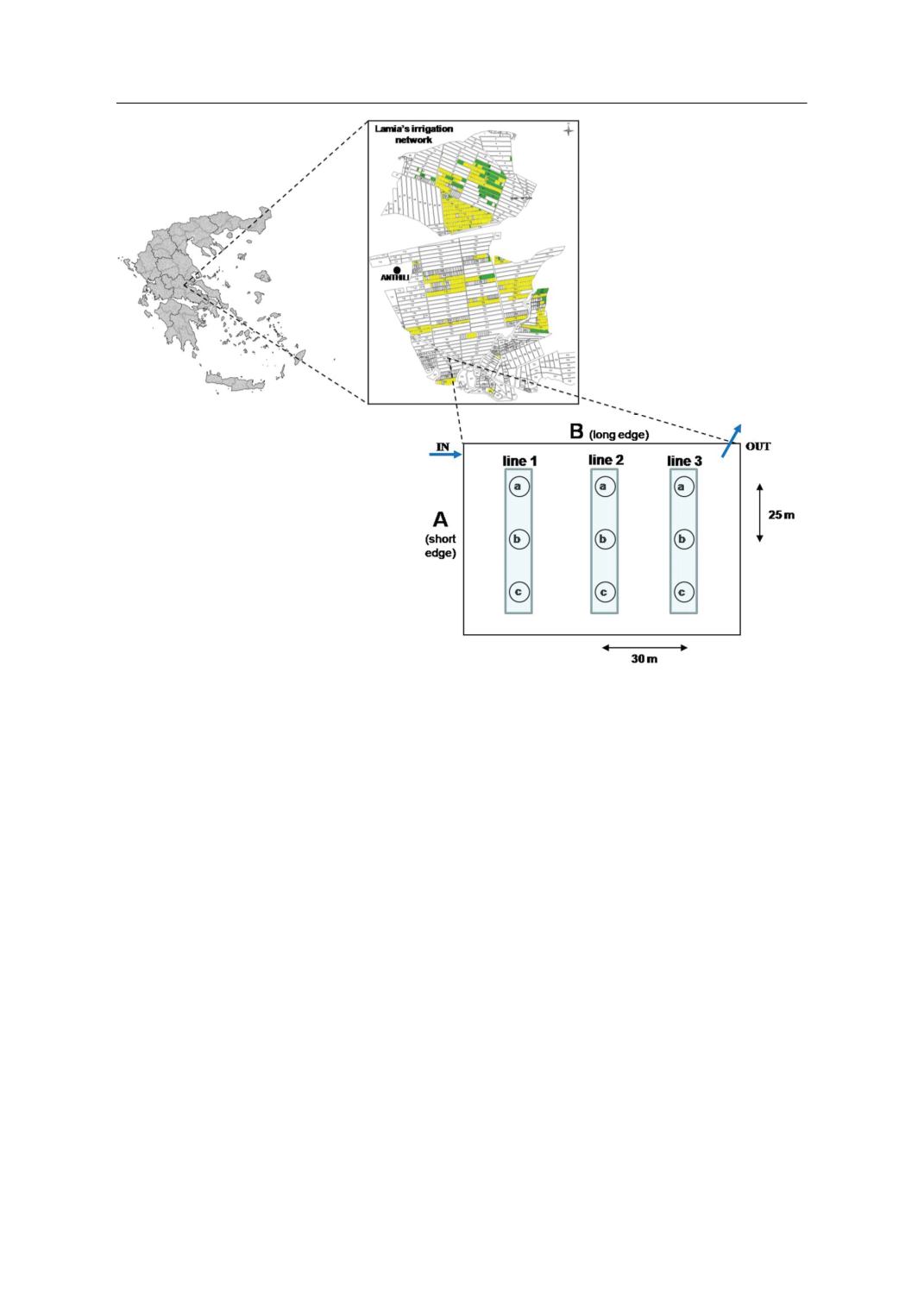
© Benaki Phytopathological Institute
Aquatain
TM
in rice fields in Greece
23
of twenty fourth
Cx
.
pipiens
larvae were in-
troduced into the cages (each batch of lar-
vae remained for three days in the cages be-
fore mortality evaluation) and adjustment
of the level of the cages was performed to
match water fluctuation.
Statistical analysis
To identify differences in percent larval mor-
tality between lines in the rice paddy, indi-
cating distances from Aquatain
TM
applica-
tion site, the data of each assessment were
analyzed using Kruskal-Wallis H-test. When
significant differences were detected, Mann
– Whitney U-test were carried out for pair-
wise comparisons. All analyses were con-
ducted using the statistical package SPSS
14.0.
Results and Discussion
The results indicated that Aquatain
TM
man-
aged successfully to cover the entire water
surface of the 1.2 ha rice paddy within a time
period of 6 days even though it was applied
along the one side only (A, short edge, Fig-
ure 2).
Larval mortality reached 100% in the
proximate line to the application site (line
1) three days after application. Mortality re-
mained at 100% six days after application
and ranged from 95% to 73%, 15 and 25 days
after application respectively. Mortality in
line 1 was significantly higher than mortal-
ity in the other lines, in all assessments, indi-
cating that the distance from the release site
affected the larval mortality (Table 1). In the
middle of the paddy (line 2), larval mortality
was quite low (28%) three days after applica-
Figure 2.
Map presenting the location of the experimental rice in Phthiotida, Lamia, the irrigation system of the rice fields,
and a drawing showing the positions of the cages in the experimental paddy.


